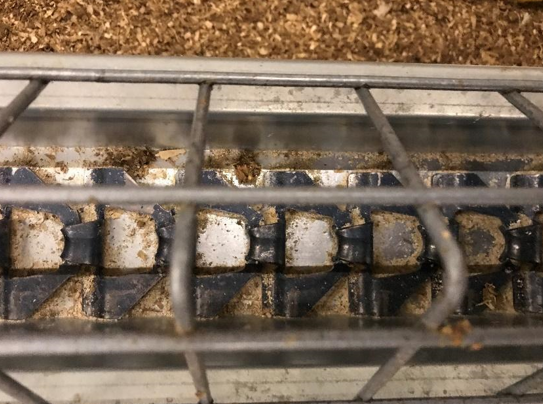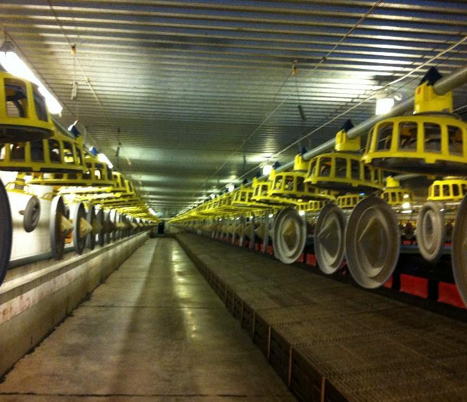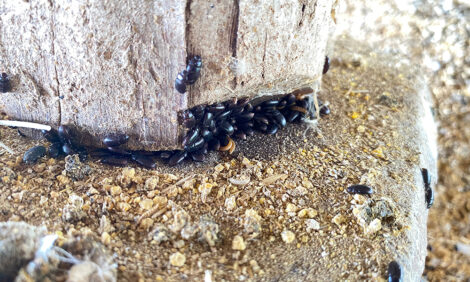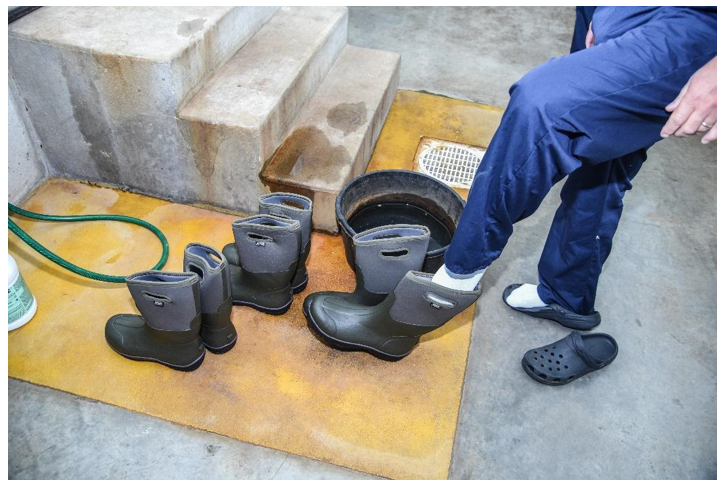



Cleaning and disinfection of feeding equipment pt.1
Part of Series:
Next Article in Series >

Dr. Pizzabiocca has 23 years of experience in the poultry industry including 10 years with Cobb. He holds a DVM with specialization in genetic improvement through selective breeding. He currently services Italy, Turkey, Egypt, and the Middle East.
Everyone understands the importance of a precise cleaning and disinfection program on the farm, but one of the most critical parts is the feeding equipment. From the very start, flocks will spend a large amount of time eating feed. In fact, it will take more time for flocks to eat than to drink even if the volume of feed is half that of the water. If the cleaning of chain or pan feeders has not been thorough, dirt or residue of feed from the previous cycle can easily become breeding grounds for microorganisms that may infect the chicks. Furthermore, feed residue can promote the growth of molds that can harm flocks through the production of toxins. Residues of feed inside or outside of the houses will also attract vermin, which can carry disease.
Good management includes calculating, as precisely as possible, the volumes of feed needed. However, there can be unexpected situations where feed is not consumed and silos remain full with feed. In the case of a disease challenge, feed must be disposed of regardless of remaining volumes. Feed can only be used if mortality is due to heat stress or electrical/mechanical failures. In broilers, it is acceptable to transfer feed to another broiler farm of a similar age. However, in breeders, it is never an option to transfer feed between farms for biosecurity reasons.

When cleaning, the first step should be removing all residual feed from the system and emptying pans, troughs, tubes, and hoppers. Silos must be completely emptied, making sure that no feed or spillage is left. Brooms, vacuums, or blowers can help to remove all feed residue. After depletion of a farm, best practice is to dispose of the remaining feed along with the litter.
After disposal of the feed, remove all parts of the feeding equipment that can be detached (pans, chains, and troughs) and put them into tanks filled with a detergent solution to soften the attached dirt. After an adequate time (24 hours is advised), clean them thoroughly with sponges and brushes and let them dry. While the washing can be done in the open, drying and storing (before returning equipment to the house) must happen in a closed and clean environment to prevent recontamination by wild birds, vermin, or other animals. The same procedure must be followed with supplementary feeders such as turbo feeders or trays used for brooding. As soon as they are removed from the house, they must be cleaned and washed.
For parts of feeding equipment that cannot be removed from the house, dry clean the parts that cannot be washed first (such as drive units) with the help of brushes, vacuums, or blowers, then cover them with plastic bags to prevent water damage. Raise all winchable equipment for easier washing and drying. If possible, open pan feeders or turn them upside down for easier cleaning and drying. Apply a detergent (a foam is best) and leave it for the recommended time. Rinse with water at high pressure, always working from the top to the bottom and from the end to the entrance of the house.

After everything in the house has dried, reinstall all the parts that were removed and apply liquid disinfectants. For best results, use the chemicals that best fit your own situation at the temperature and concentration according to the manufacturer’s instructions. Apply the disinfectant with low-pressure water to ensure all surfaces are covered.
After liquid disinfection, apply fumigation. Before fumigating, install supplementary feeders used for brooding so that they are also disinfected. Again, use the correct concentrations and volumes of disinfectant for fumigation (normally calculated by cubic meter of house volume) and apply at the recommended temperature.
Feed distribution tubes are likely to be the most difficult part of the system to clean. Wet washing is normally not an option. One option is using blowers or vacuums inside the tubes to remove dust and dirt. Alternatively, fill the tubes with feed or a feed ingredient (i.e., maize) mixed with a high dosage of disinfectant during the days of the cleaning, then completely empty them. This procedure is not the simplest and should be practiced with extreme care to prevent any remaining residue of treated feed.
External silos also need to be cleaned. The most appropriate method will be determined by the age, material and design of the bins. When possible, wet wash and disinfect silos followed by fumigation. If washing or use of liquid disinfectants is not permissible, use vacuums and blowers to remove all dirt and feed residue before fumigation. When it is not possible to wet clean the silos, organic acids blends or a blend of organic acids and disinfectants (i.e., formaldehyde) can be applied to prevent the growth of molds or bacteria. Always verify that these chemicals are approved for use in your region.
Feed will be one of, if not the most, important driver of performance — especially in broilers. Therefore, it is necessary that it is delivered under sanitary conditions to the flock. A proper cleaning and disinfection program of feeding equipment is an important part of a good biosecurity program.













